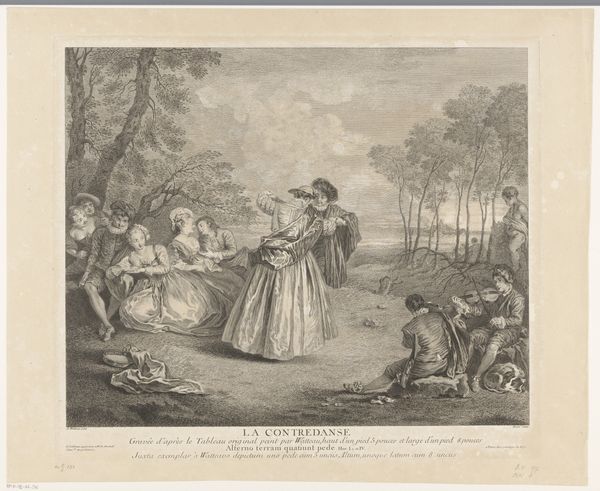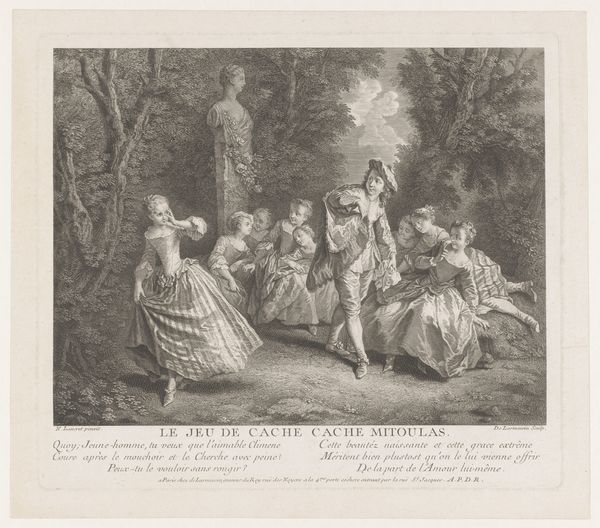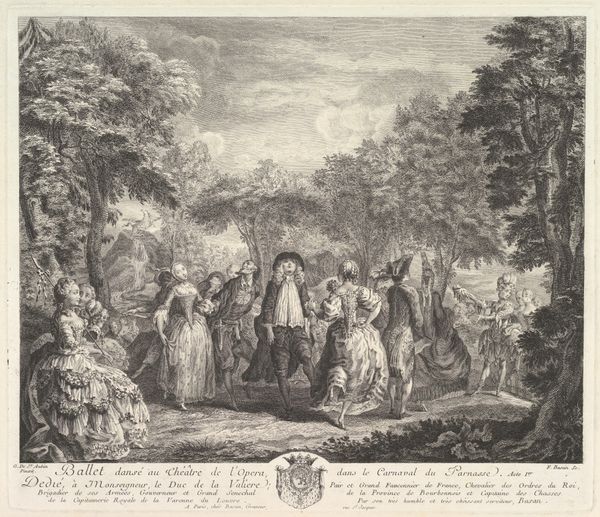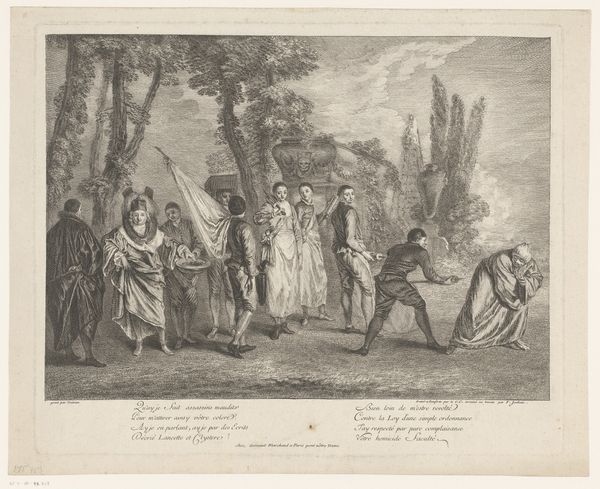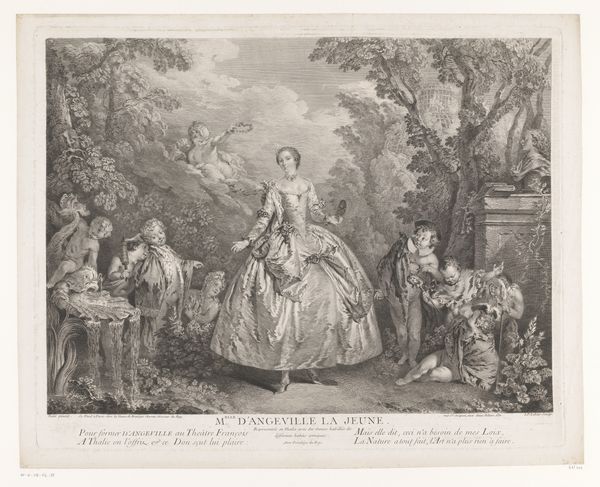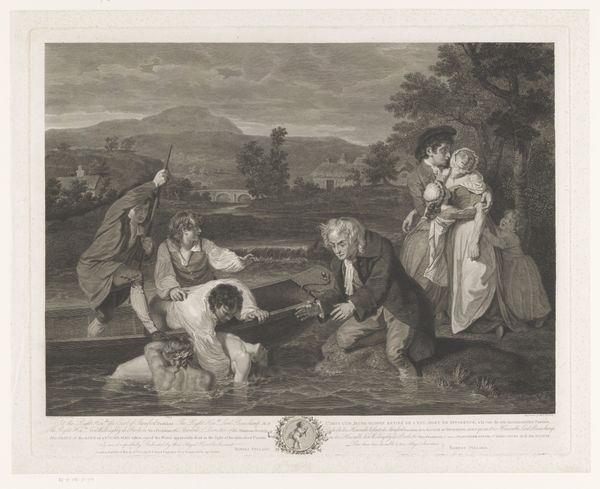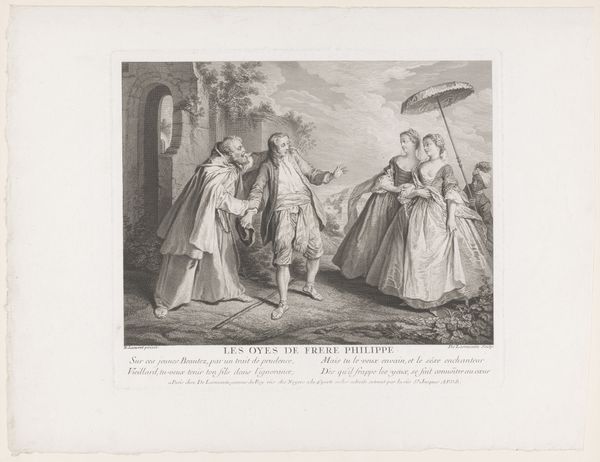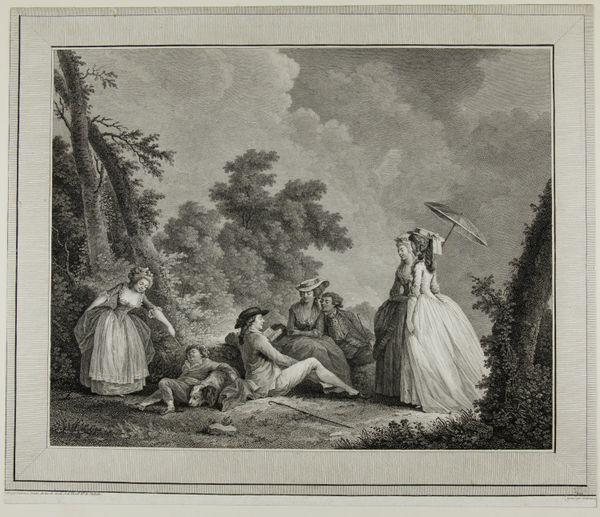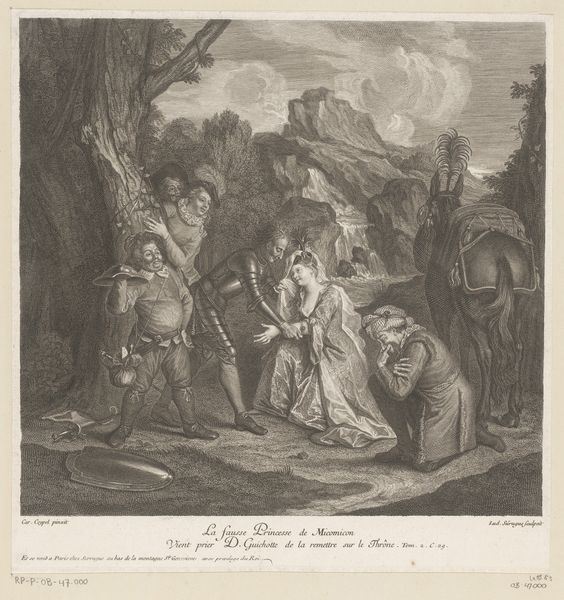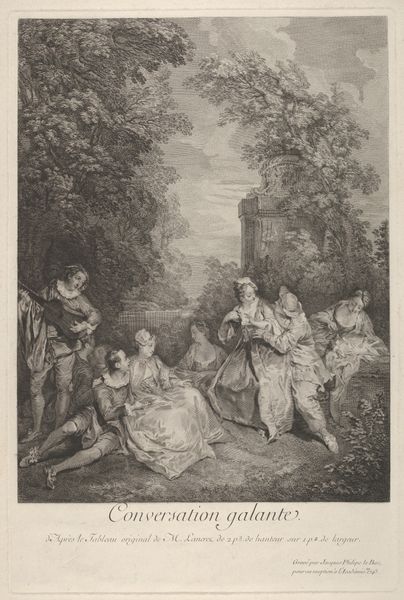
Dimensions: sheet: 9 5/16 x 10 7/8 in. (23.7 x 27.6 cm)
Copyright: Public Domain
Editor: Here we have "La Jeunesse indifférente," or "Indifferent Youth," an engraving by Nicolas Dupin, created sometime between 1778 and 1787. It depicts a group of young people in what looks like a park or garden. I’m immediately drawn to the composition, how the figures are arranged. What strikes you when you look at this work? Curator: The arrangement of figures is indeed compelling. Observe how Dupin uses line to define form. The contrast between the darker foreground and lighter background creates spatial recession. Tell me, do you notice any structural elements guiding your eye? Editor: I think so. The figures kind of create a loose circle around the seated woman, and the lines of the trees in the background draw my eye upwards. Curator: Precisely. Now consider the interplay of light and shadow. The artist has employed a complex web of lines to build tonal variation that gives shape and volume to the figures. How does the pattern-making influence the work's overall feel? Editor: I think the tight hatching almost gives it a kind of nervous energy, even though the title suggests indifference. Curator: Interesting observation. Semiotically speaking, it’s a visual contradiction. Dupin has manipulated the inherent qualities of line and tone to present us with not just a picture but an argument, challenging assumptions about representation. The details encourage close scrutiny of its technical construction, drawing out its formal logic. Editor: I’ve never thought about approaching prints that way. This makes me appreciate how technique contributes to meaning. Curator: Indeed. It moves us to a more sophisticated interpretation, allowing a dialogue between form and concept.
Comments
No comments
Be the first to comment and join the conversation on the ultimate creative platform.
